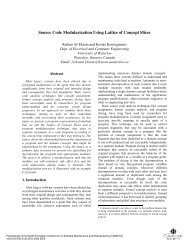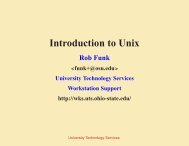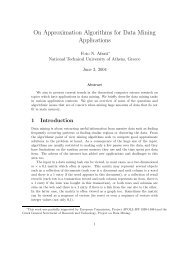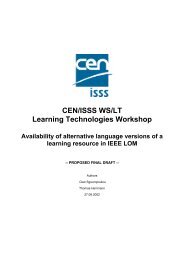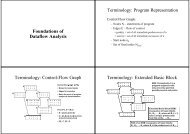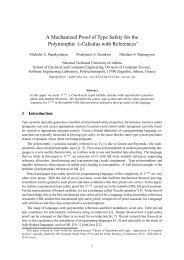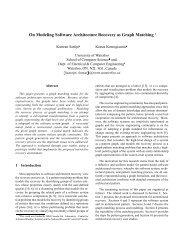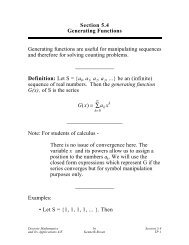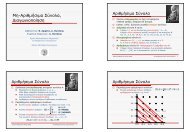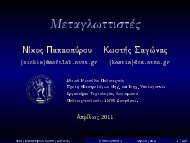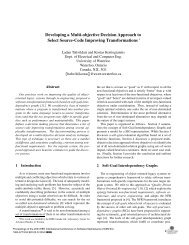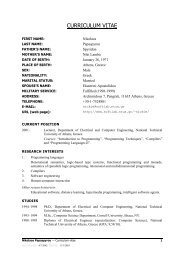Manual
Manual
Manual
You also want an ePaper? Increase the reach of your titles
YUMPU automatically turns print PDFs into web optimized ePapers that Google loves.
Chapter 1: The Concepts of Bison 11<br />
1 The Concepts of Bison<br />
This chapter introduces many of the basic concepts without which the details of Bison will<br />
not make sense. If you do not already know how to use Bison or Yacc, we suggest you start<br />
by reading this chapter carefully.<br />
1.1 Languages and Context-Free Grammars<br />
In order for Bison to parse a language, it must be described by a context-free grammar.<br />
This means that you specify one or more syntactic groupings and give rules for constructing<br />
them from their parts. For example, in the C language, one kind of grouping is called an<br />
‘expression’. One rule for making an expression might be, “An expression can be made of a<br />
minus sign and another expression”. Another would be, “An expression can be an integer”.<br />
As you can see, rules are often recursive, but there must be at least one rule which leads<br />
out of the recursion.<br />
The most common formal system for presenting such rules for humans to read is Backus-<br />
Naur Form or “BNF”, which was developed in order to specify the language Algol 60. Any<br />
grammar expressed in BNF is a context-free grammar. The input to Bison is essentially<br />
machine-readable BNF.<br />
There are various important subclasses of context-free grammar. Although it can handle<br />
almost all context-free grammars, Bison is optimized for what are called LALR(1) grammars.<br />
In brief, in these grammars, it must be possible to tell how to parse any portion of an input<br />
string with just a single token of look-ahead. Strictly speaking, that is a description of<br />
an LR(1) grammar, and LALR(1) involves additional restrictions that are hard to explain<br />
simply; but it is rare in actual practice to find an LR(1) grammar that fails to be LALR(1).<br />
See Section 5.7 [Mysterious Reduce/Reduce Conflicts], page 77, for more information on<br />
this.<br />
Parsers for LALR(1) grammars are deterministic, meaning roughly that the next grammar<br />
rule to apply at any point in the input is uniquely determined by the preceding input<br />
and a fixed, finite portion (called a look-ahead) of the remaining input. A context-free grammar<br />
can be ambiguous, meaning that there are multiple ways to apply the grammar rules to<br />
get the same inputs. Even unambiguous grammars can be nondeterministic, meaning that<br />
no fixed look-ahead always suffices to determine the next grammar rule to apply. With the<br />
proper declarations, Bison is also able to parse these more general context-free grammars,<br />
using a technique known as GLR parsing (for Generalized LR). Bison’s GLR parsers are able<br />
to handle any context-free grammar for which the number of possible parses of any given<br />
string is finite.<br />
In the formal grammatical rules for a language, each kind of syntactic unit or grouping<br />
is named by a symbol. Those which are built by grouping smaller constructs according<br />
to grammatical rules are called nonterminal symbols; those which can’t be subdivided<br />
are called terminal symbols or token types. We call a piece of input corresponding to a<br />
single terminal symbol a token, and a piece corresponding to a single nonterminal symbol<br />
a grouping.<br />
We can use the C language as an example of what symbols, terminal and nonterminal,<br />
mean. The tokens of C are identifiers, constants (numeric and string), and the various keywords,<br />
arithmetic operators and punctuation marks. So the terminal symbols of a grammar



